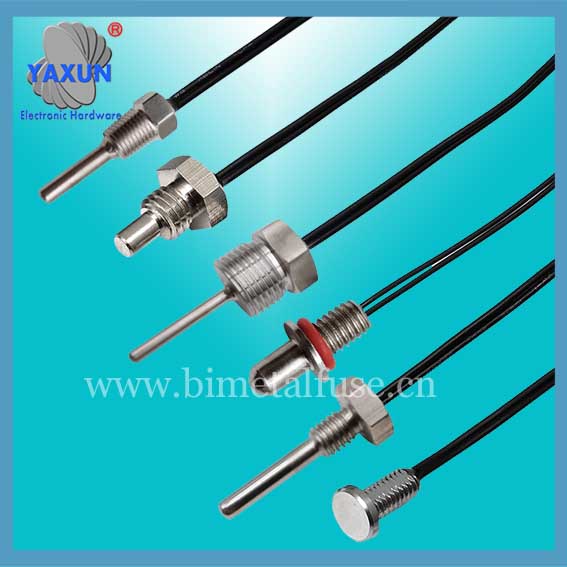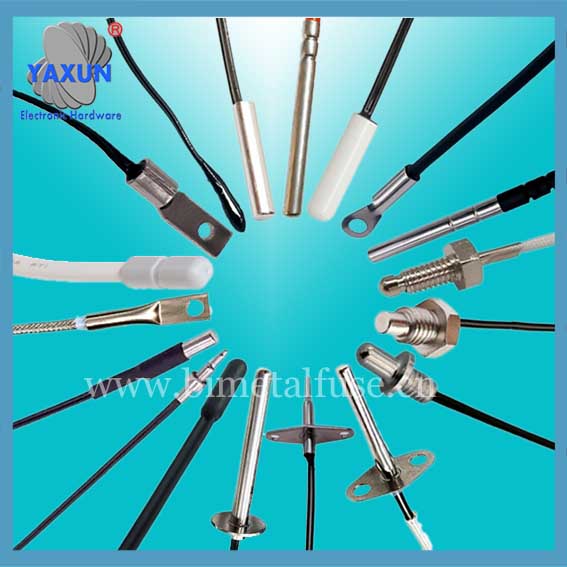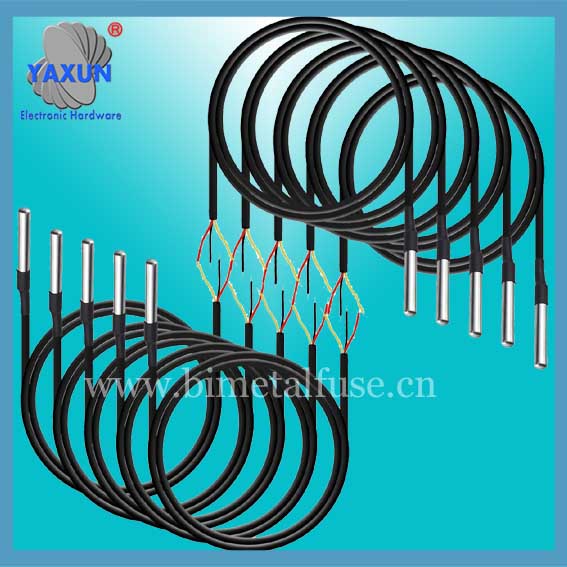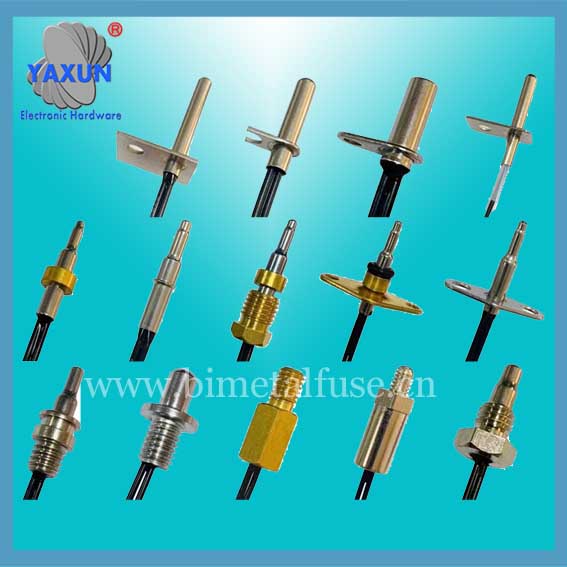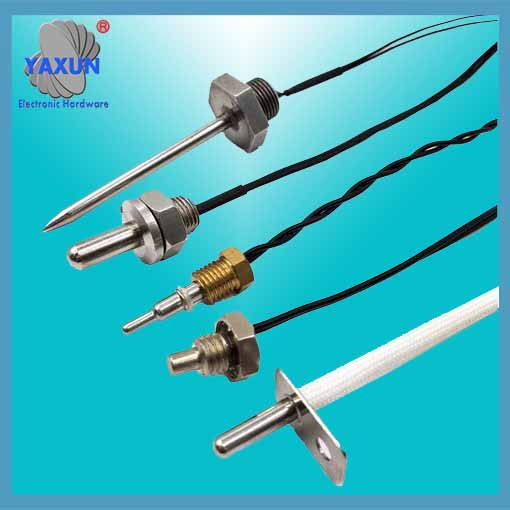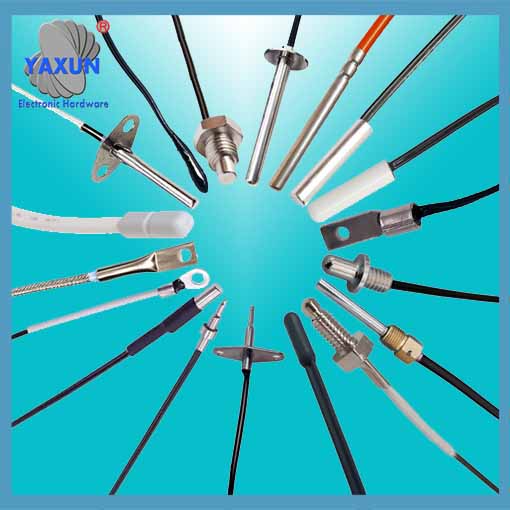Manufacturer of precision temperature and humidity sensors
- PRODUCT DETAIL
Temperature and humidity sensors are just one type of sensor. It is air temperature and humidity detection device. After measuring the temperature and humidity, it will be transformed into electrical signals or other required forms of information output in accordance with a certain rule to meet user needs.
Because temperature and humidity have a close relationship from both the physical quantity itself and the actual people's life, a temperature and humidity integrated sensor will be generated accordingly. A temperature and humidity sensor refers to a device or device that can convert temperature and humidity into electrical signals that can be easily measured and processed. Temperature and humidity sensors on the market generally measure temperature and relative humidity.
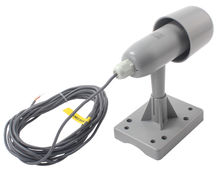
Introduction of temperature and humidity sensor
Digital signal temperature and humidity sensors are mainly divided into two programs: single bus and IIC.
Temperature: Measure the physical quantity of an object. It is one of the 7 basic physical quantities in the International System of Units. In production and scientific research, many physical phenomena and chemical processes are carried out at a certain temperature, and people's lives are also closely related to him.
Humidity: Humidity has a close relationship with life long ago, but it is more difficult to express it in terms of quantity.
The most commonly used physical quantity for humidity in daily life is the relative humidity of the air. Expressed as% RH. Relative humidity is closely related to temperature in the derivation of physical quantities. The higher the temperature of a certain volume of closed gas, the lower the relative humidity, and the lower the temperature, the higher the relative humidity. This involves complex thermal engineering knowledge.
Some definitions of humidity:
Dew point: Refers to air containing a certain amount of water vapor (absolute humidity). When the temperature drops to a certain level, the water vapor contained will reach a saturated state (saturated humidity) and begin to liquefy into water. This phenomenon is called condensation.The temperature at which water vapor begins to liquefy into water is called "dew point temperature" or "dew point" for short. If the temperature continues to drop below the dew point, supersaturated water vapor in the air will condense into water droplets on the surface of the object. In addition, wind is closely related to the temperature and humidity in the air, and it is also one of the important factors affecting the change of air temperature and humidity.
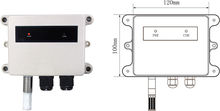
Several common measurement methods for humidity measurement sensors
Humidity measurement technology has a long history. With the development of electronic technology, modern measurement technology has also developed rapidly. Humidity measurement is divided into two or thirty types in principle. Humidity is expressed in terms of absolute humidity, relative humidity, dew point, ratio of moisture to dry gas (weight or volume), and so on. But humidity measurement has always been one of the well-known problems in the world of metrology. A seemingly simple quantity, which is deeply studied, involves quite complicated physical-chemical theoretical analysis and calculation. Novices may overlook many factors that must be noticed in humidity measurement, and thus affect fair use.
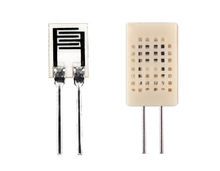
Common humidity measurement methods are:
Dynamic method (double pressure method, double temperature method, shunt method). Static method (saturated salt method, sulfuric acid method). Dew point method, wet and dry bulb method, and various electronic sensor methods.
The two-pressure method and the two-temperature method here are based on the thermodynamic P, V, and T equilibrium principles, and the equilibration time is longer. The split flow method is based on the precise mixing of absolute moisture and absolute dry air. As a result of modern measurement and control instruments, these devices can be done quite sophisticated, because of complex equipment, expensive, time consuming operation. It is mainly used for standard measurement, and its measurement accuracy can reach ± 2% RH-± 1.5% RH.
The saturated salt method in the static method is the most common method in humidity measurement, and it is simple and easy to implement. However, the saturated salt method has strict requirements on the balance of liquid and gas phases, and has higher requirements on the stability of the ambient temperature. Use it to wait a long time to equilibrate, low humidity point requires longer. Especially when the difference between the indoor humidity and the humidity in the bottle is large, it needs to be balanced for 6 to 8 hours each time it is turned on.
The dew point method measures the temperature when the humid air reaches saturation, which is a direct result of thermodynamics. It has high accuracy and a wide measurement range. The accuracy of the precision dew point meter for measurement can reach ± 0.2 ° C or even higher. However, the chilled mirror dew point meter using modern optical-electrical principle is expensive and is often used with standard humidity generators.
Dry and wet bulb method, which is a method of measuring humidity invented in the 18th century. Has a long history and is most commonly used. The wet and dry bulb method is an indirect method. It uses the wet and dry bulb equation to convert the humidity value, and this equation is conditional: That is, the wind speed near the wet bulb must reach 2.5m / s or more. This condition is simplified by the common wet and dry bulb thermometers, so its accuracy is only 5 ~ 7% RH, which is obviously lower than that of electronic humidity sensors. Obviously, the wet and dry bulbs are not static methods. Do not simply think that as long as the measurement accuracy of the two thermometers is improved, it is equivalent to improving the measurement accuracy of the hygrometer.
This article wants to emphasize two points: First, because humidity is a function of temperature, changes in temperature decisively affect the results of humidity measurements. Regardless of the method, accurate measurement and control of temperature is paramount. It should be noted that even a well-insulated constant temperature and humidity box has a certain gradient in the temperature of its working room. Therefore, it is difficult to completely uniform the humidity in this space.
second, Due to the large differences in principles and methods, it is difficult to directly calibrate and identify various measurement methods, and most of them can only be compared by indirect methods. Therefore, it is very difficult to calibrate the measurement results of the full humidity range (relative humidity 0 ~ 100% RH) between the two methods, or to calibrate the measurement results of all points in all temperature ranges. For example, a ventilated wet and dry bulb hygrometer requires flowing air with a specified wind speed, and the saturated salt law requires strict sealing. The two cannot be compared. The best way is to identify them step by step according to the transmission method and verification regulations stipulated by the state for the humidity measurement instrument verification system (standard).
Because temperature and humidity have a close relationship from both the physical quantity itself and the actual people's life, a temperature and humidity integrated sensor will be generated accordingly. A temperature and humidity sensor refers to a device or device that can convert temperature and humidity into electrical signals that can be easily measured and processed. Temperature and humidity sensors on the market generally measure temperature and relative humidity.

Introduction of temperature and humidity sensor
Digital signal temperature and humidity sensors are mainly divided into two programs: single bus and IIC.
Temperature: Measure the physical quantity of an object. It is one of the 7 basic physical quantities in the International System of Units. In production and scientific research, many physical phenomena and chemical processes are carried out at a certain temperature, and people's lives are also closely related to him.
Humidity: Humidity has a close relationship with life long ago, but it is more difficult to express it in terms of quantity.
The most commonly used physical quantity for humidity in daily life is the relative humidity of the air. Expressed as% RH. Relative humidity is closely related to temperature in the derivation of physical quantities. The higher the temperature of a certain volume of closed gas, the lower the relative humidity, and the lower the temperature, the higher the relative humidity. This involves complex thermal engineering knowledge.
Some definitions of humidity:
Relative humidity: It is stipulated in the measurement method that humidity is defined as "amount of the state of the image". The humidity referred to in daily life is relative humidity, expressed as RH%. In short, i.e., a gas (usually air) percentage of the amount of saturated water vapor (saturation vapor pressure of water) under the same amount of steam (water vapor pressure) and its air contained in the case.
Absolute humidity: Refers to the amount of water vapor actually contained in a unit volume of air, usually in grams. Temperature has a direct impact on absolute humidity. In general, the higher the temperature, the more water vapor is emitted, and the greater the absolute humidity; In contrast, the absolute humidity is small.
Saturated humidity: The maximum amount of water vapor that can be contained in the air per unit volume at a certain temperature. If this limit is exceeded, excess water vapor will condense and become water droplets. At this time, the humidity of the air will be called saturation humidity. The saturated humidity of air is not fixed, it changes with the temperature. The higher the temperature, the more water vapor can be contained in a unit volume of air and the greater the saturated humidity.
Absolute humidity: Refers to the amount of water vapor actually contained in a unit volume of air, usually in grams. Temperature has a direct impact on absolute humidity. In general, the higher the temperature, the more water vapor is emitted, and the greater the absolute humidity; In contrast, the absolute humidity is small.
Saturated humidity: The maximum amount of water vapor that can be contained in the air per unit volume at a certain temperature. If this limit is exceeded, excess water vapor will condense and become water droplets. At this time, the humidity of the air will be called saturation humidity. The saturated humidity of air is not fixed, it changes with the temperature. The higher the temperature, the more water vapor can be contained in a unit volume of air and the greater the saturated humidity.
Dew point: Refers to air containing a certain amount of water vapor (absolute humidity). When the temperature drops to a certain level, the water vapor contained will reach a saturated state (saturated humidity) and begin to liquefy into water. This phenomenon is called condensation.The temperature at which water vapor begins to liquefy into water is called "dew point temperature" or "dew point" for short. If the temperature continues to drop below the dew point, supersaturated water vapor in the air will condense into water droplets on the surface of the object. In addition, wind is closely related to the temperature and humidity in the air, and it is also one of the important factors affecting the change of air temperature and humidity.

Several common measurement methods for humidity measurement sensors
Humidity measurement technology has a long history. With the development of electronic technology, modern measurement technology has also developed rapidly. Humidity measurement is divided into two or thirty types in principle. Humidity is expressed in terms of absolute humidity, relative humidity, dew point, ratio of moisture to dry gas (weight or volume), and so on. But humidity measurement has always been one of the well-known problems in the world of metrology. A seemingly simple quantity, which is deeply studied, involves quite complicated physical-chemical theoretical analysis and calculation. Novices may overlook many factors that must be noticed in humidity measurement, and thus affect fair use.

Common humidity measurement methods are:
Dynamic method (double pressure method, double temperature method, shunt method). Static method (saturated salt method, sulfuric acid method). Dew point method, wet and dry bulb method, and various electronic sensor methods.
The two-pressure method and the two-temperature method here are based on the thermodynamic P, V, and T equilibrium principles, and the equilibration time is longer. The split flow method is based on the precise mixing of absolute moisture and absolute dry air. As a result of modern measurement and control instruments, these devices can be done quite sophisticated, because of complex equipment, expensive, time consuming operation. It is mainly used for standard measurement, and its measurement accuracy can reach ± 2% RH-± 1.5% RH.
The saturated salt method in the static method is the most common method in humidity measurement, and it is simple and easy to implement. However, the saturated salt method has strict requirements on the balance of liquid and gas phases, and has higher requirements on the stability of the ambient temperature. Use it to wait a long time to equilibrate, low humidity point requires longer. Especially when the difference between the indoor humidity and the humidity in the bottle is large, it needs to be balanced for 6 to 8 hours each time it is turned on.
The dew point method measures the temperature when the humid air reaches saturation, which is a direct result of thermodynamics. It has high accuracy and a wide measurement range. The accuracy of the precision dew point meter for measurement can reach ± 0.2 ° C or even higher. However, the chilled mirror dew point meter using modern optical-electrical principle is expensive and is often used with standard humidity generators.
Dry and wet bulb method, which is a method of measuring humidity invented in the 18th century. Has a long history and is most commonly used. The wet and dry bulb method is an indirect method. It uses the wet and dry bulb equation to convert the humidity value, and this equation is conditional: That is, the wind speed near the wet bulb must reach 2.5m / s or more. This condition is simplified by the common wet and dry bulb thermometers, so its accuracy is only 5 ~ 7% RH, which is obviously lower than that of electronic humidity sensors. Obviously, the wet and dry bulbs are not static methods. Do not simply think that as long as the measurement accuracy of the two thermometers is improved, it is equivalent to improving the measurement accuracy of the hygrometer.
This article wants to emphasize two points: First, because humidity is a function of temperature, changes in temperature decisively affect the results of humidity measurements. Regardless of the method, accurate measurement and control of temperature is paramount. It should be noted that even a well-insulated constant temperature and humidity box has a certain gradient in the temperature of its working room. Therefore, it is difficult to completely uniform the humidity in this space.
second, Due to the large differences in principles and methods, it is difficult to directly calibrate and identify various measurement methods, and most of them can only be compared by indirect methods. Therefore, it is very difficult to calibrate the measurement results of the full humidity range (relative humidity 0 ~ 100% RH) between the two methods, or to calibrate the measurement results of all points in all temperature ranges. For example, a ventilated wet and dry bulb hygrometer requires flowing air with a specified wind speed, and the saturated salt law requires strict sealing. The two cannot be compared. The best way is to identify them step by step according to the transmission method and verification regulations stipulated by the state for the humidity measurement instrument verification system (standard).
PREVIOUS:NONE
NEXT:Definition of absolute humidity sensor
NEXT:Definition of absolute humidity sensor

